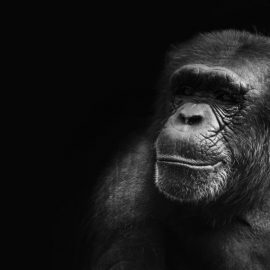

This article is an excerpt from the Shortform book guide to "The Selfish Gene" by Richard Dawkins. Shortform has the world's best summaries and analyses of books you should be reading.
Like this article? Sign up for a free trial here .
What is mate selection and how does it happen in nature? How important is attractiveness in the process?
Mate selection is the process by which animals select partners for making and raising offspring. The importance of physical attraction varies, but there are certain qualities important for mate selection in nature.
Read more about mate selection in nature and the importance of physical attraction.
Attractiveness and Mate Selection
Contrary to the previous section, wherein females tried to ensure that their partners would stick around and contribute to raising the offspring, in some species they’ll completely set aside the idea of a long-term partner in mate selection. In such species, females will simply look for males with the most desirable traits and breed with them. An interesting side effect of this is that there’s a higher importance on physical attraction, regardless of its survival value. An attractive male could breed with many different females and spread his genes very quickly.
This leads to what could be considered “fashion.” Even if the attractive quality is objectively harmful, such as excessively long tail feathers in certain bird species (which take more resources to grow and could make the bird easier for predators to spot and catch), females who don’t bear children with that quality have less of a chance of their genes continuing to survive, because their offspring will not reproduce as successfully as other members of the species.
An alternative mate selection theory to sexual attractiveness states that these handicaps evolved because they are handicaps—males who survive with such handicaps are demonstrating that their other genes must be very strong. However, scientists haven’t been able to work this handicap theory into a logical model of evolution.
In some species such as elephant seals, this leads to situations where a single male can have an enormous harem of females, while many other males do not breed at all. In the case of elephant seals, the harem holder becomes such simply by fighting off all other males. By breeding with attractive or strong males, the females are more likely to produce offspring who will themselves be successful breeders, thereby keeping the selfish genes alive.
Given that one male can impregnate many females, it would seem like the ideal sex distribution would be skewed heavily toward females. However, the ESS in mammals is roughly 50% male to 50% female, and the selfish gene theory can explain why.
First of all, sex is determined by a single chromosome: The presence of a Y chromosome makes an animal male, and a father has a 50% chance of passing on his Y chromosome to his offspring. A female has two X chromosomes, and will always pass one on to her offspring.
(Shortform note: There are genetic conditions where a mammal may have something other than the typical XX or XY setup, but these rare cases don’t change the main point of this section.)
It’s theoretically possible that genes could evolve that favor X chromosomes, skewing the sex ratio in favor of females. However, if that happened, parents of males would be at a huge genetic advantage. Due to a shortage of males their offspring would probably mate with many different females, giving them a huge number of grandchildren compared to parents of females. The number of Y chromosomes in the population would then increase until the sex distribution was back to the roughly 50/50 balance we see in nature.
As a result of this 50/50 distribution, in many species, females are highly sought after for mate selection. Meanwhile, there are many more males than necessary. This often leads to males being colorful, flashy, and loud, because they have to compete for mates while females can afford to be picky.

———End of Preview———
Like what you just read? Read the rest of the world's best book summary and analysis of Richard Dawkins's "The Selfish Gene" at Shortform .
Here's what you'll find in our full The Selfish Gene summary :
- Why organisms don't matter, only genes do
- How all life forms begin with a replicating molecule
- How species need to balance aggression and pacifism to survive






